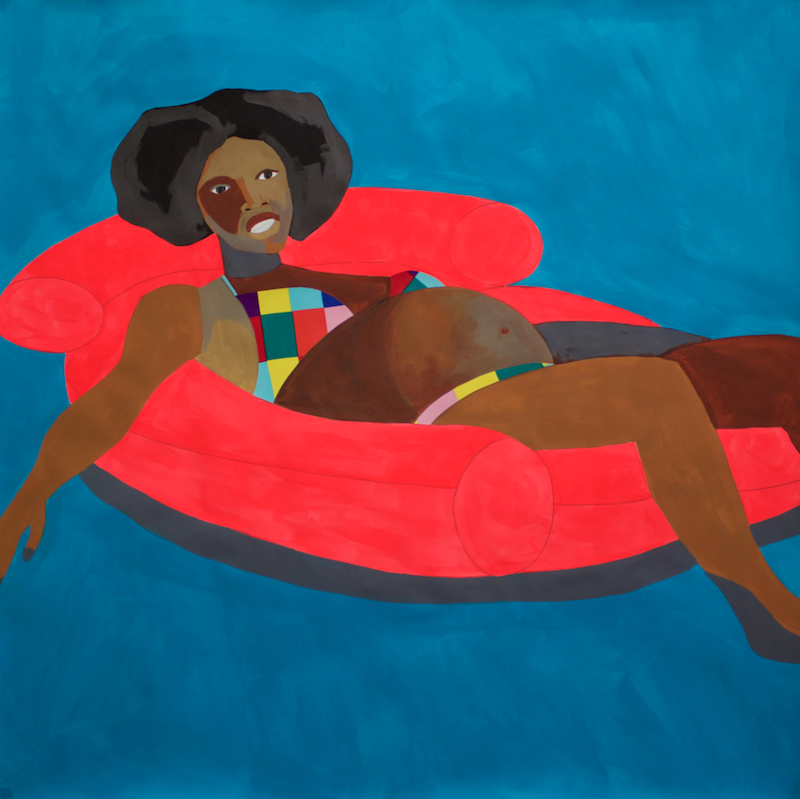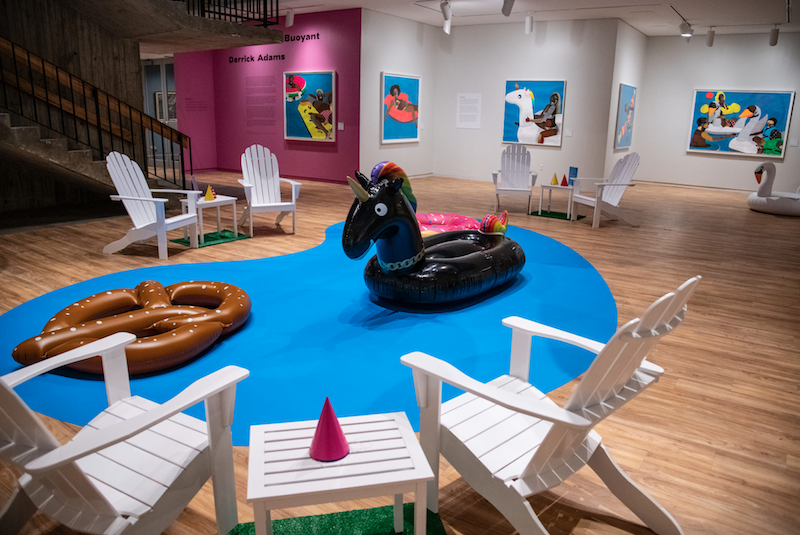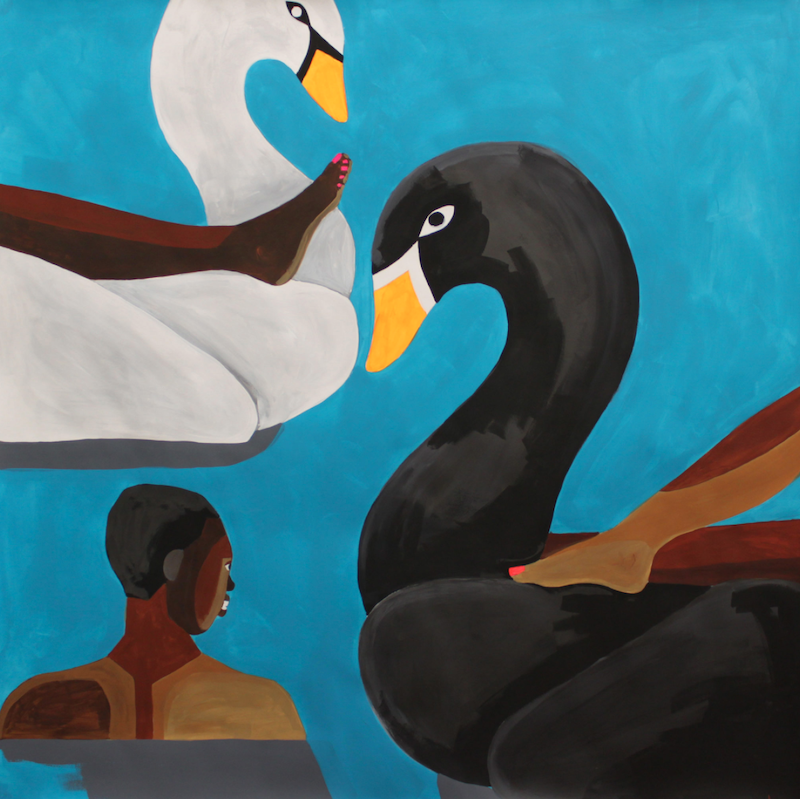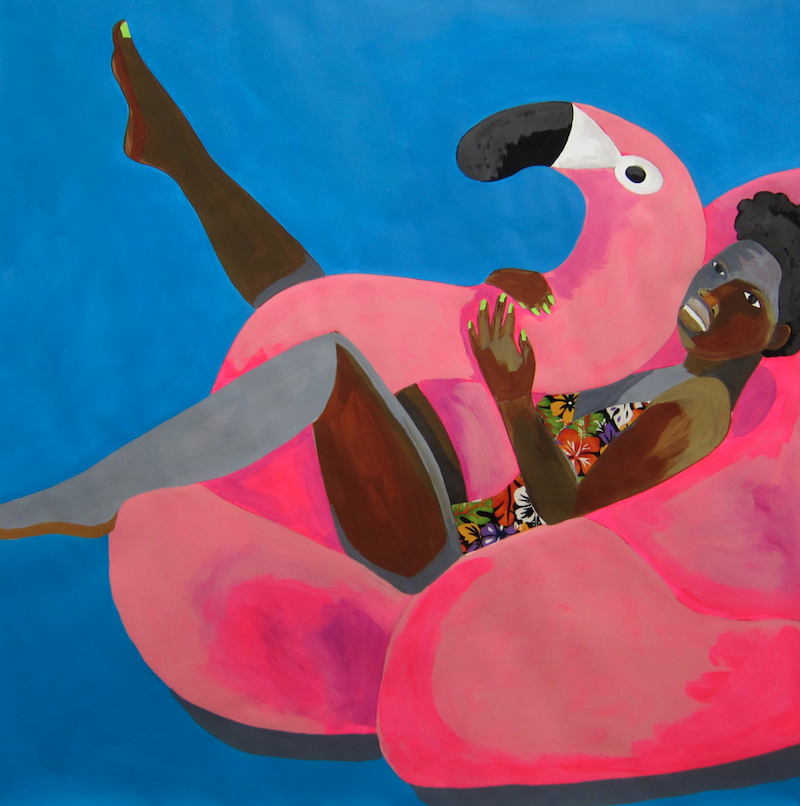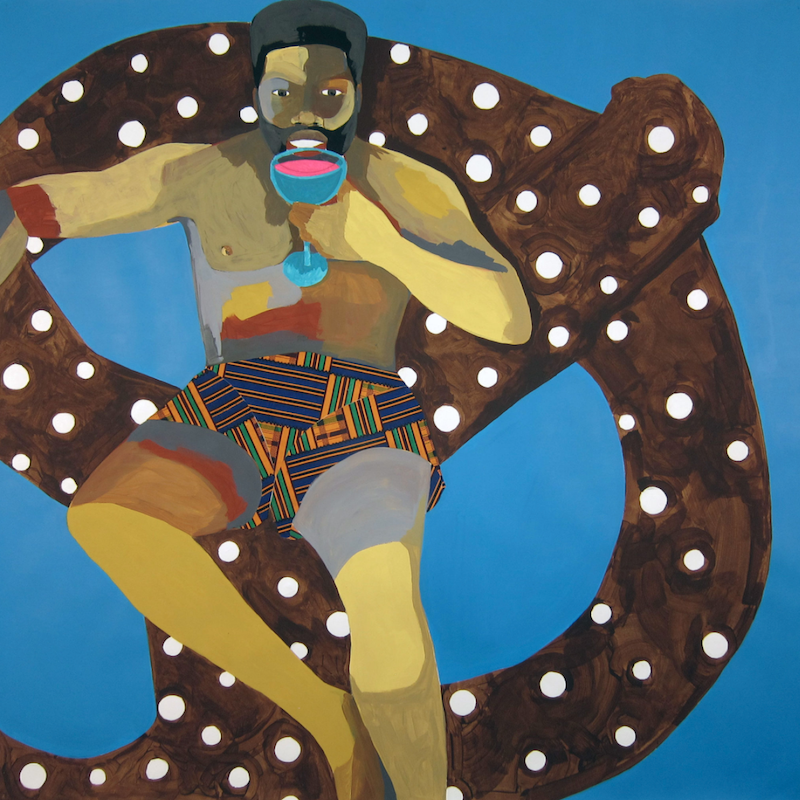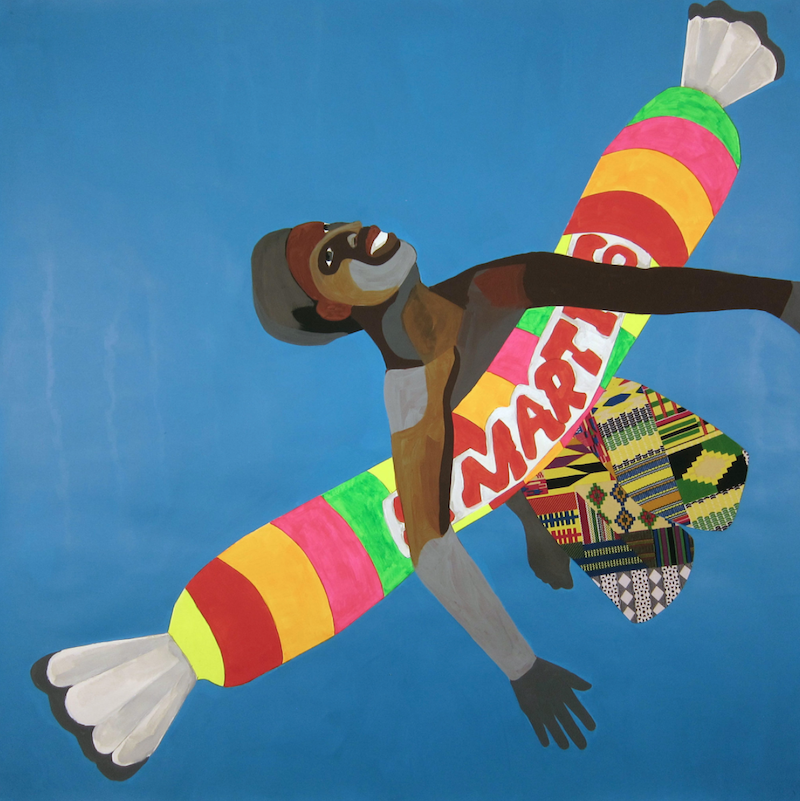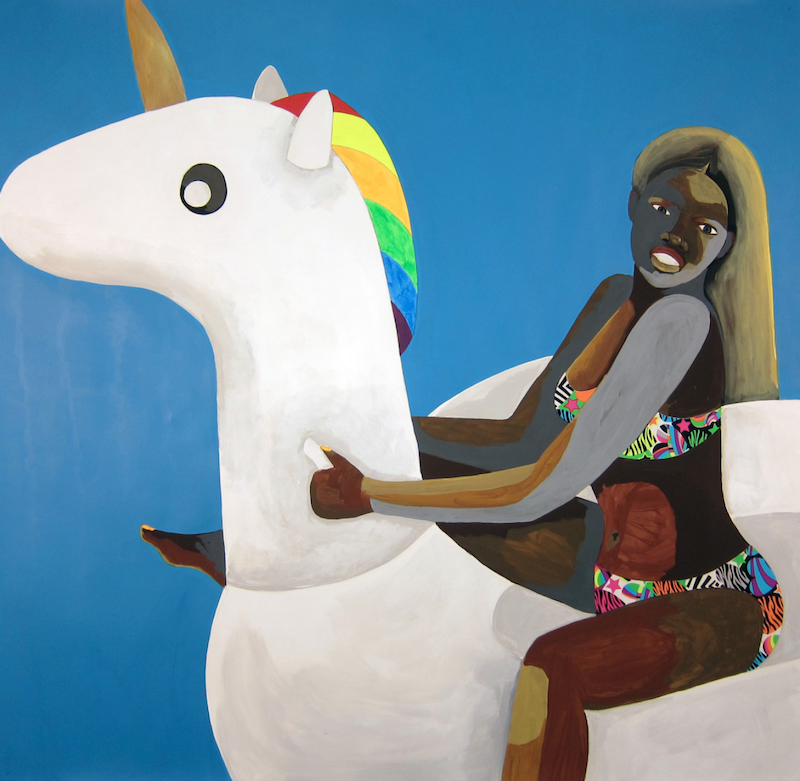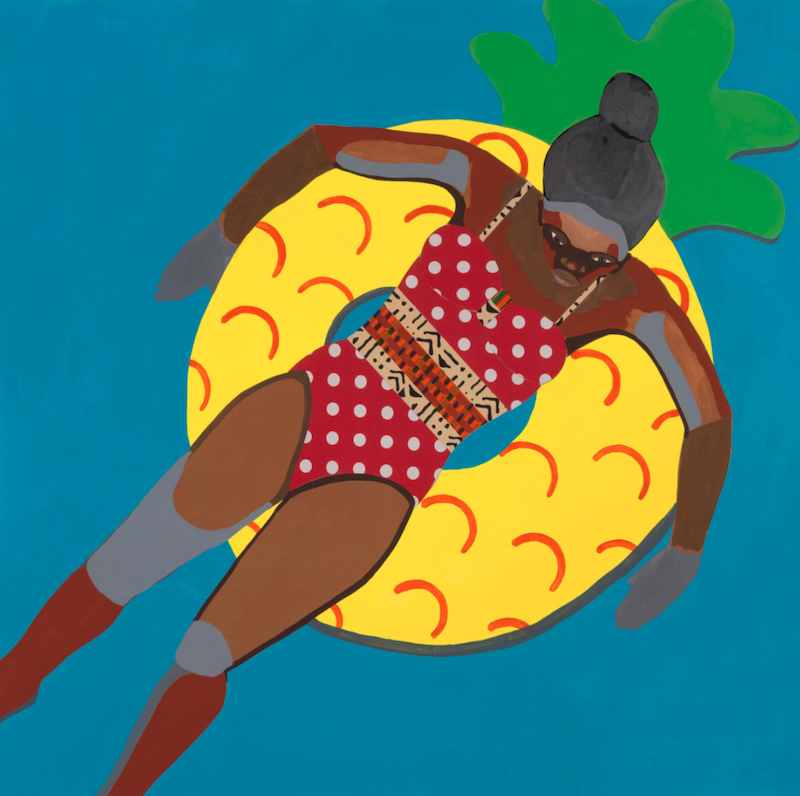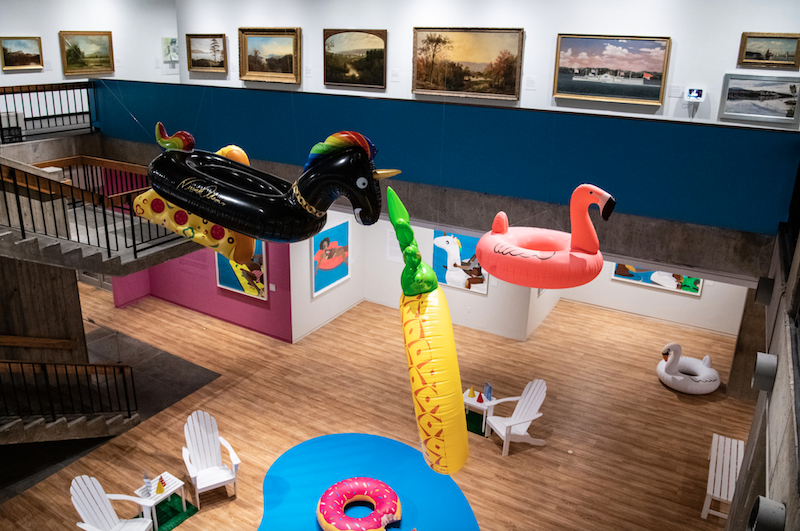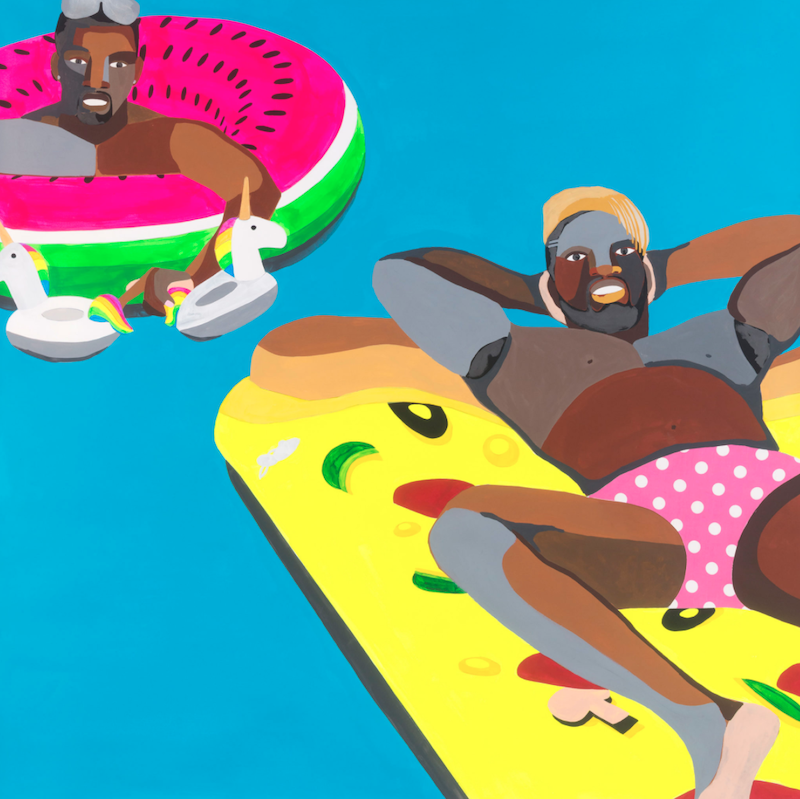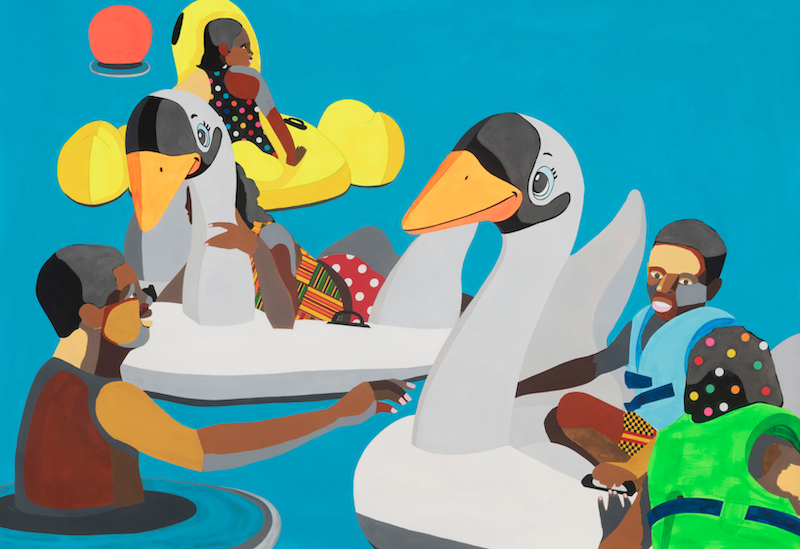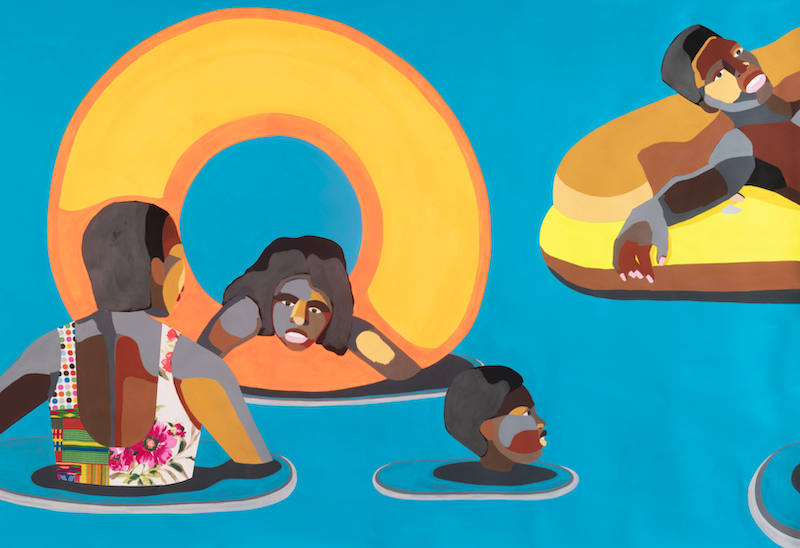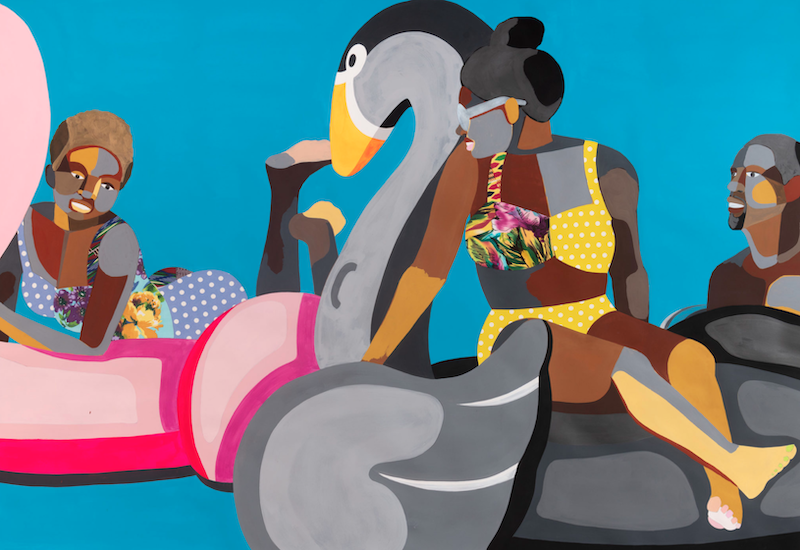“Sometimes a normal social gathering can represent a radical space," Derrick Adams noted recently. "I’m often inspired by the people around me at parties, and how they are making important changes to society. You can go to a social event and still get things accomplished.” With the backdrop of the beautiful, relaxed and leisure-based works that make up the Buoyant, Adams' exhibition at the Hudson River Museum in Yonkers, this quote feels quite powerful. We may socialize, we may indulge, but activism can occur in the act of leisure.
When we worked with Adams on our 2019 Fall cover story, he told us about his work, “I realized that there is a stigma with certain types of imposed imagery that has been placed on the black body through media and through history. We have accepted certain stigmas as kind of defining who we are... For me, as an artist, I realized that you have the power to redirect people's relationship to imagery based on inserting them into different contexts. And, in that way, if the current generation doesn't see it as being an alternative perspective, then the younger generation will start to adopt those images in a way that's totally separated from the generation before. I have the ability to change the course of the future language of visual culture. That's what artists do.”
As the Museum notes, "Executed between 2016 and 2019, the Floaters series is a collection of vividly painted portraits depicting Black people in various states of rest and play, buoyantly floating on calm waters. Relaxed bodies, some with a gentle grin, others holding a summertime beverage, melt into rainbow-colored unicorns or candy shaped plastic floaties. This classically American iconography signifies the carefree pleasures of success: the American Dream in physical form. Through Adams’ hand, and his vantage point, these archetypal images feel simultaneously familiar yet unexpected.
"With the Floaters series, Adams recontextualizes this classic visual trope to create a more accurate and fuller representation of the Black lived experience. The immediacy of the imagery in these paintings invites viewers to bring their own notions to the scene and recognize moments that have too often been missing in mainstream American media."
The Museum is closed at the moment, but we wanted to share this video and images today.

